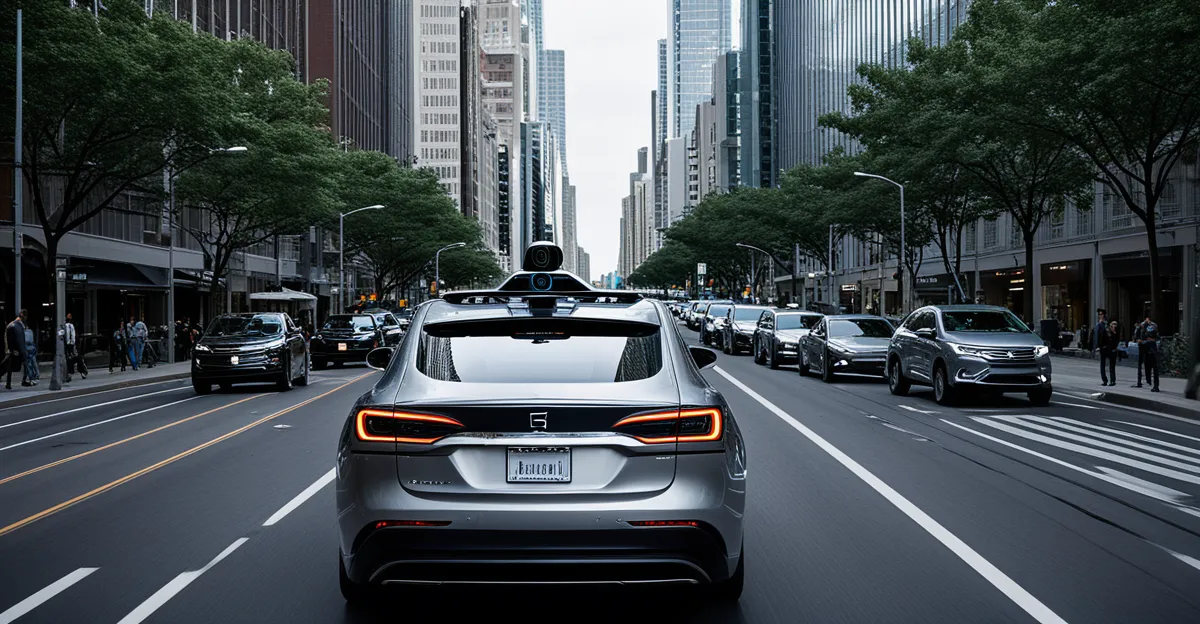Core Impacts of Autonomous Vehicles on Urban Planning
Autonomous vehicles (AVs) are poised to drastically reshape city layouts and street design, prompting urban planners to rethink traditional frameworks. The impact lies in reducing the need for wide streets dedicated to parking or manual vehicle navigation. Instead, more space could be allocated to pedestrian zones, bike lanes, and green areas, fostering a shift in urban planning implications from vehicle-centric to human-centric designs.
Integration with existing infrastructure presents both opportunities and challenges. AVs require precise digital mapping and sensor-enabled environments, pushing cities to upgrade roadways and incorporate smart technologies. This fusion of physical and digital infrastructure is critical for safe and efficient operation, marking a significant phase in city design transformation.
Also to read : How Is the UK Automotive Industry Adapting to the Rise of Electric Vehicles?
Moreover, transportation priorities will evolve. With AVs’ capability to optimize routes and reduce accidents, city planners anticipate a shift in public space allocation away from parking lots towards shared, multi-use areas, enhancing community connectivity. Prioritizing efficient traffic flow while accommodating emerging mobility services will redefine urban transport landscapes, ensuring future cities are smarter, greener, and more livable.
Traffic Management and Mobility Changes
Autonomous vehicles enable smart traffic systems by leveraging sensors, real-time data, and machine learning to optimize urban mobility. How do these technologies affect traffic flow? They reduce congestion by dynamically adjusting signal timings and rerouting vehicles to less crowded routes, improving overall autonomous vehicle traffic flow.
Have you seen this : How Are UK Automotive Advancements Shaping the Future of Sustainable Transportation?
Adopting intelligent traffic control systems means cities can monitor road usage continuously, using data-driven insights to manage vehicle density during peak hours. This not only smooths commuting patterns but also elevates safety by minimizing stop-and-go conditions and accident risks.
How does this transformation reshape urban mobility? The rise of mobility as a service (MaaS) models integrates autonomous vehicles with public transit, ride-sharing, and micro-mobility options. This shift encourages less personal car ownership, easing pressure on road networks and fostering more sustainable transportation habits.
In summary, the introduction of smart traffic systems leads to improved efficiency, reduced emissions, and a shift in transit dynamics. Cities embracing these changes can expect smoother traffic flow, enhanced urban mobility, and a more adaptive transportation ecosystem aligned with modern urban planning principles.
Parking, Land Use, and Real Estate Development
The autonomous vehicles impact on parking demand reduction is profound. With self-driving cars capable of dropping passengers off and parking remotely, both on-street and off-street parking needs will significantly decline. This shift frees up valuable urban land previously dedicated to vehicle storage, opening opportunities for land use changes that can enhance community spaces or commercial developments.
How will cities repurpose parking spaces? Many urban areas are exploring converting these spots into green zones, pedestrian promenades, or retail extensions, promoting more vibrant, people-friendly environments. This transition aligns with broader urban planning implications, emphasizing mixed-use districts and walkability.
What effects are anticipated on real estate? Reduced parking demand influences property values and development prospects. Properties near transit nodes may become more desirable, given the better integration with autonomous vehicle networks and reduced car ownership necessity. Developers might prioritize projects emphasizing accessibility over traditional parking lots.
This evolution fosters a city design transformation, where land use pivots away from car storage toward multifunctional urban landscapes. Careful planning will help balance growth, sustainability, and livability as autonomous vehicles reshape how land and real estate resources are allocated.
Infrastructure Innovations and Investment Priorities
Integrating urban infrastructure with autonomous vehicles demands substantial upgrades. Roads must be equipped with advanced smart city technology, such as sensor-equipped traffic signals, enhanced signage, and embedded digital connectivity. These innovations ensure seamless communication between vehicles and infrastructure, improving safety and efficiency.
Prioritising transportation investment is essential for cities aiming to be AV-ready. Funding will focus on retrofitting existing roadways and developing new digital frameworks that support real-time data exchange. This helps facilitate smoother autonomous vehicle traffic flow and supports evolving urban mobility needs.
Public-private partnerships are becoming critical drivers in deploying these technologies. Collaboration between governments and tech firms accelerates infrastructure modernization while sharing financial and technical risks. Such partnerships enable cities to leverage expertise and investment power, ensuring timely implementation of smart infrastructure.
In essence, the autonomous vehicles impact extends beyond vehicles themselves; it catalyses a broader city design transformation. Strategic infrastructure investments directly influence the success of AV integration, balancing innovation with practical urban planning implications to build smarter, more connected cities.
Societal and Environmental Benefits and Challenges
How do autonomous vehicles impact urban sustainability? Primarily, AVs contribute to significant reductions in emissions. Their optimized driving patterns minimize fuel consumption and lower pollutants, enabling cities to foster greener urban spaces. This transformation supports broader environmental aims, such as improved air quality and combating climate change.
What role do AVs play in enhancing accessibility? Autonomous vehicles make transportation more inclusive by serving underserved populations and individuals with disabilities. They provide independent mobility options, overcoming barriers like lack of public transit access or driving inability, which is a critical urban planning implication.
However, the societal shift involves challenges. Regulatory frameworks must adapt to address safety, privacy, and equity concerns, ensuring fair distribution of benefits across communities. Legal issues surrounding liability and data security also demand careful consideration.
Balancing these societal and environmental benefits and challenges is key to achieving lasting positive outcomes. Forward-thinking city design transformation embraces accessibility and sustainability while navigating evolving social and legal landscapes. Planners must integrate technology with policy to build equitable, environmentally responsible urban futures powered by autonomous vehicles.







